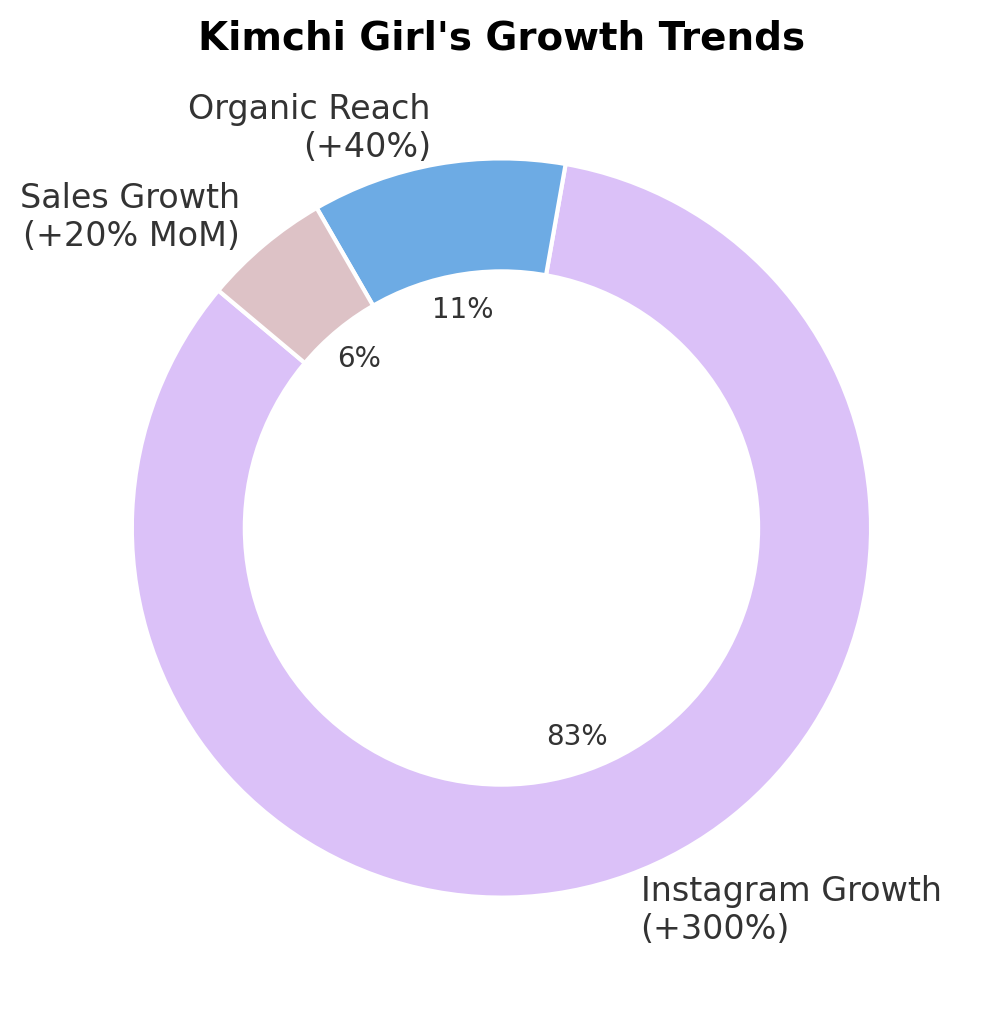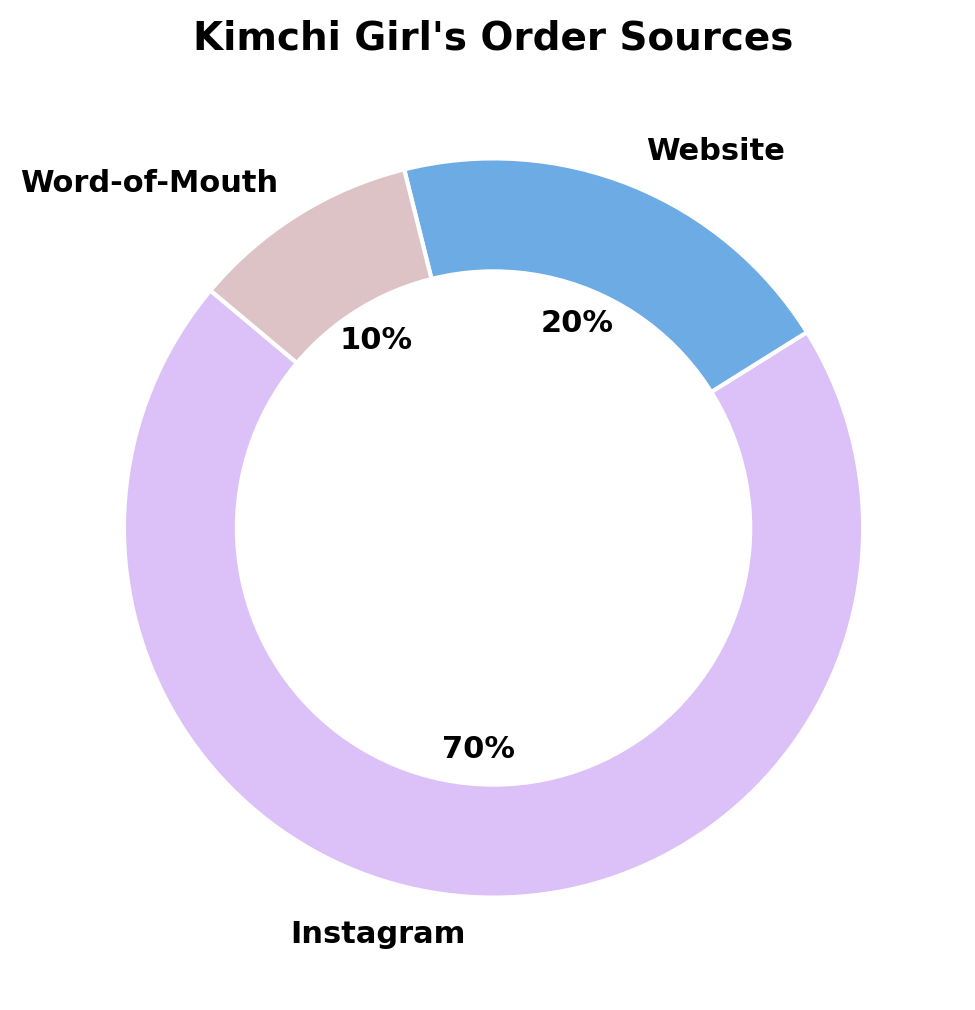How the Business Started: A Culinary Passion Turned Movement
It takes a single spark to ignite a movement, and for Kimchi Girl, that spark was a love for global flavors.
Culinary innovation often begins with a deep passion, but what transforms that passion into a thriving business is commitment, resilience, and the ability to adapt. Kimchi Girl’s journey started with a simple yet powerful idea: to introduce Pakistani food lovers to bold international flavors while maintaining authenticity.
The founder, having traveled extensively, developed an appreciation for the cultural significance of food and how it serves as a bridge between different communities. Inspired by the growing global food trends, she recognized a gap in Pakistan’s culinary market, authentic Korean, Mediterranean, and European flavors remained largely unexplored.
With just a home kitchen and an Instagram page, she began experimenting with recipes, fermenting kimchi, crafting Mediterranean dips, and developing fusion dishes that combined the best of multiple worlds. What started as an experiment quickly gained traction, as food lovers embraced the idea of high-quality, handcrafted, and globally inspired cuisine.
However, translating a passion into a sustainable business required more than just creativity, it demanded market education, patience, and overcoming deeply ingrained culinary preferences. From convincing customers to try fermented foods to ensuring that every dish balanced global authenticity with local palates, the journey was filled with learning curves. But with every challenge, Kimchi Girl proved that Pakistan’s food culture was ready for a revolution.
From Challenges to Breakthroughs
In the middle of difficulty lies opportunity.
Every entrepreneur faces challenges, but it is how these challenges are tackled that defines the journey. For Kimchi Girl, the path to success was paved with hurdles unique to bringing global flavors to a traditionally local palate. With determination, creativity, and strategic problem-solving, these obstacles became stepping stones toward building a culinary movement.
1. Convincing a Skeptical Market
Pakistani food culture is deeply rooted in its traditional flavors, and introducing fermented foods like kimchi, Mediterranean dips, and fusion dishes was met with hesitation. Many customers were unfamiliar with the bold, tangy, and umami-rich profiles of these dishes, making adoption a slow process.
A survey conducted before launching revealed that 70% of respondents had never tried Korean food, highlighting the need for consumer education and market adaptation.
Kimchi Girl tackled this challenge by leveraging storytelling, content marketing, and in-person sampling experiences to demystify international flavors and make them more approachable to the local audience.
2. Ingredient Sourcing & Supply Chain Issues
Maintaining authenticity in flavor and quality was non-negotiable, but sourcing premium ingredients like gochujang, sesame oil, and Mediterranean tahini proved to be a significant hurdle. Importing these essentials came with high costs, logistical delays, and occasional inconsistencies in supply.
60% of early ingredient shipments were either delayed or too costly, impacting pricing and production efficiency.
To combat this, the brand adopted a dual-sourcing strategy, ensuring reliable international suppliers while also identifying local alternatives that met quality standards without compromising authenticity.
3. Educating the Market on Global Cuisines
Unlike conventional fast food, authentic global cuisine requires an understanding of ingredients, preparation techniques, and cultural significance. Kimchi Girl needed to educate its audience while maintaining an engaging brand presence.
Engagement rates on educational food content were 3x higher than promotional posts, proving that storytelling played a vital role in consumer adoption.
By using social media, live cooking demos, and influencer collaborations, the brand turned unfamiliar dishes into exciting, must-try experiences.
4. Maintaining Quality While Scaling
As demand grew, the challenge became scaling production without losing the handcrafted quality that made Kimchi Girl unique. Traditional Korean and Mediterranean preparation techniques require time, precision, and patience, making mass production difficult.
Kimchi Girl implemented a batch production model, which allowed for consistent quality control while increasing output incrementally.
Instead of rushing into large-scale manufacturing, the brand focused on slow, sustainable growth, ensuring that every dish maintained its original integrity and flavor profile.
Each of these challenges required innovation, persistence, and adaptability. Kimchi Girl’s story proves that introducing bold, unfamiliar flavors into a local market takes time, but with the right strategy, cultural appreciation, and customer trust, culinary revolutions can happen one dish at a time.
Introducing something new means facing doubts, but food has a way of winning people over—one bite at a time.
Scaling Kimchi Girl: Three Key Growth Drivers
A successful brand isn’t just about great food, it’s about building a community around an experience
As Kimchi Girl navigated the competitive food industry, it relied on three key pillars to scale effectively while staying true to its identity.
1. Digital Storytelling & Community Building
Kimchi Girl built a strong digital presence, leveraging Instagram, TikTok, and food blogs to tell its story, educate audiences, and create an engaged community.
Rather than just selling food, the brand positioned itself as a culinary educator, sharing content about ingredients, cooking techniques, and the cultural relevance of each dish.
70% of Kimchi Girl’s orders come through Instagram DMs, showcasing the impact of digital-first engagement.
A timeline-based infographic showing Kimchi Girl’s growth through social media engagement.
Instagram followers increased by 300% after influencer collaborations
User-generated content led to a 40% increase in organic reach
Viral posts contributed to a 20% month-over-month sales growth

2. Strategic Menu Development
Instead of overwhelming customers with unfamiliar flavors, Kimchi Girl strategically introduced fusion dishes that blended international tastes with Pakistani preferences.
By incorporating familiar spice blends and cooking methods into traditionally foreign dishes, the brand lowered the barrier to entry for customers while preserving authenticity.
The best-selling product combines gochujang with a local spice mix, making it both familiar and innovative, helping first-time customers ease into global flavors.
A bar chart comparing the top-performing menu items in terms of sales, showing:
Korean Kimchi Bowls (35%)
Fusion Gochujang Wraps (30%)
Mediterranean Mezze Boxes (20%)
Korean Spicy Wings (15%)

3. Collaboration & Influencer Endorsements
To accelerate brand awareness, Kimchi Girl partnered with local food influencers, chefs, and niche bloggers.
By getting endorsements from recognizable names in the food community, the brand established credibility and positioned itself as a must-try experience for adventurous eaters.
A single influencer campaign increased brand search volume by 300% in one week, highlighting the power of digital collaborations.
Each of these growth drivers helped Kimchi Girl not only gain visibility but also build long-term customer trust, reinforcing the idea that global flavors can thrive in Pakistan with the right storytelling, adaptation, and community engagement.
The Recipe for Success: What Kimchi Girl’s Journey Teaches Us
The strength of the team is each individual member. The strength of each member is the team
— Phil Jackson
Kimchi Girl’s journey from a passion project to a thriving culinary brand offers valuable insights for entrepreneurs looking to introduce international flavors in a traditional market.
Through market education, digital innovation, and a deep understanding of cultural fusion, the brand successfully carved a niche in Pakistan’s evolving food landscape.
1. Patience & Market Education Are Essential
Introducing a new culinary experience takes time. Kimchi Girl didn’t just sell food; it sold a story, one that educated customers about Korean and Mediterranean flavors, making them more approachable.
After months of persistent engagement, customer queries about fermented foods and gochujang-based sauces increased by 250%, proving that education drives demand.
2. Digital Engagement Builds Trust & Demand
Social media became Kimchi Girl’s most powerful tool. Through engaging content, behind-the-scenes storytelling, and interactive discussions, the brand created curiosity and trust among Pakistani consumers.
70% of Kimchi Girl’s orders originate from Instagram, showing the effectiveness of digital-first brand building
A pie chart showcasing where Kimchi Girl’s orders come from, breaking it down into Instagram (70%), Website (20%), and Word-of-Mouth (10%).

3. Authenticity & Adaptation Must Coexist
Rather than simply replicating global recipes, Kimchi Girl adapted flavors to local palates, maintaining authenticity while ensuring the food resonated with Pakistani consumers.
The best-selling item blends Korean spices with a local favorite, achieving a 40% higher reorder rate than purely international dishes
4. Strategic Collaborations Accelerate Growth
By partnering with influencers, food bloggers, and niche communities, Kimchi Girl expanded its reach beyond organic growth, securing a loyal customer base faster than traditional marketing methods.
A single influencer campaign resulted in a 300% spike in engagement, proving that community validation drives consumer confidence.
Blending Cultures, Redefining Taste: What Kimchi Girl’s Journey Teaches Us
Kimchi Girl’s story is a testament to how bold ideas, when nurtured with patience, innovation, and strategic adaptation, can reshape an industry. Much like a recipe that requires the perfect balance of ingredients, the brand’s success has been a careful fusion of authenticity, consumer education, and digital influence.
Introducing a foreign cuisine into a market deeply rooted in its traditional food habits is no small feat. It requires not just great food, but a deep understanding of consumer behavior, storytelling, and the psychology of taste. Kimchi Girl recognized that food is more than just sustenance, it is an emotional experience, a memory, and a cultural bridge that connects people across borders.
The journey of Kimchi Girl highlights an essential truth: the most groundbreaking food brands are not just selling meals; they are introducing new ways of thinking about food. By positioning itself as an educator, innovator, and storyteller, Kimchi Girl has successfully transformed skepticism into curiosity, and curiosity into demand.
Pakistan’s food industry is undergoing a rapid evolution, where modern consumers are increasingly open to new flavors and global influences, but only if they are introduced the right way. Blending familiarity with novelty, staying committed to quality, and leveraging digital engagement have been the brand’s key ingredients for success.
The rise of Kimchi Girl underscores that for food entrepreneurs looking to redefine culinary landscapes, it is not enough to introduce a new product; they must cultivate an experience, build trust, and create a movement. Whether it’s a kitchen experiment or a full-fledged brand, cultural fusion, digital storytelling, and market education are no longer optional, they are essential.
Kimchi Girl’s success proves that with the right balance of persistence, patience, and passion, even the most unfamiliar flavors can find their place on a nation’s table. The journey isn’t just about food, it’s about creating a new way of experiencing taste, culture, and connection.

